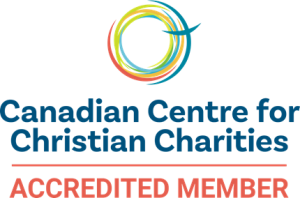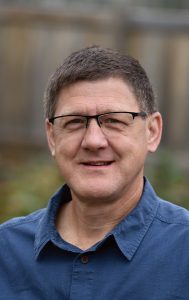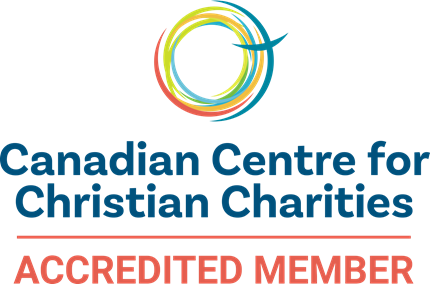
Hopelines
A quarterly publication presenting news and stories of Living Hope Native Ministries, a partnership dedicated to serving the First Nations of Ontario.
Airplane

Long-time mission pilot Henry Hostetler and the late Cello Meekis come out from under the wing.
The recent sale of the Cessna Hawk XP marked the end of an era for LHNM. Since the beginning of this ministry story, a variety of aircraft have been used to enable travel to remote communities in Ontario. In almost 70 years and over many thousands of hours of flight time, not a serious injury or fatality marred that part of our story. Time moves on, and we transition to other ways of doing the travel that still is required. We grieve a little, and give thanks a lot.
Our Vision
That in every First Nations context the local church would reach its full potential--worshipping in full devotion, attracting the seekers, mobilizing believers, restoring families, changing communities, affecting the world.

Beyond “Us and Them”
By Merle Nisly

Merle Nisly, former pastor of the church, visiting John in his home.
In the year 2005, an inspiring idea became a topic of conversation that led to the birth of a new reality. Almost one year later, in January 2006, that reality was the newly-incorporated Living Hope Native Ministries of Ontario.
As I reflect on the conversations and the hopes that fueled this new conversation, I remember one inspiring phrase the founding group repeated many times in our meetings: “We’re going to stop with the ‘us and them’ language.” I haven’t forgotten that.
Nearly 50 years ago now, I first became a volunteer with what was commonly known as a “mission” agency. Embedded in my naïve, young mind was the concept of “us,” the ones who had the goods, and “them,” the ones who needed the goods. That way of picturing such relationships and the world in which we lived didn’t prepare me very well for ideas like partnership, mutual learning, mutual service, or peer accountability.
In God’s grace and mercy, some decades of experiences and conversations and personal relationships made a lot of difference in how we came to consider those ideas—especially the simplistic “us” and “them” classification.

The late John and Jemima Strang were leaders of the church in Poplar Hill First Nation, ON.
When the late Cello Meekis and I first sat down in 2005 to talk about the idea of starting from scratch with a brand-new organization, there was an immediate and compelling sense of hope and of future. When we talked of this new possibility, we got very excited about the ideals of peer relationships, of new definitions of “ownership,” of demonstrating to the world that unity really is possible in such a partnership.
What I interpreted on Cello’s face and from his passionate words was, “You finally get it! This is what I’ve been trying to say.” These were significant steps in changing our perspective, and adjusting our worldview.
This also connected me to a vivid memory of another impactful interaction. About 15 years earlier, I had been having a conversation with three indigenous leaders in the small church I had served for 10 years. I was explaining to them how it would be best if I, as an outsider, would move away and they would assume full responsibility for leading the church.
I thought I was offering these leaders an exciting new level of freedom and responsibility. Instead, John said, “But why can’t we just do it together? I thought you’d grow old here with us.” I didn’t know what to say. I just knew that his wisdom did not align with the currently accepted theories and philosophy of cross-cultural missions. So we moved away.
Now, in 2005, with this new phase of planning with Cello Meekis, Albert James, Brian Rae, Jim Keesic, and Peter Campbell, we had the privilege of starting with a fresh set of assumptions. There was a clear desire to adjust the idea of ownership and control of the new agency to being more Canadian, to being indigenous, and to being a partnership—all at the same time. It wasn’t a rejection of the previous system; it was a hopeful step into a new paradigm.
It seemed very clear to everyone around the table in 2005 that a fresh start was the best way to relate to our history, and to make a way for Indigenous leaders to shape and carry out a ministry mandate in the next era.
It feels important to note that there were other factors that opened up our minds for the drastic step of closing a 50-year-old mission agency and beginning a new start-up with Indigenous ownership. There were external pressures related to the history of schools and relationships that had become a type of identity for the agency. There was no chance that the next generation of Indigenous leaders would ever be willing to own all of that history and carry on with its implications.

The Board of the newly-formed Living Hope Native Ministries in 2006: (L to R) Cello Meekis, Albert James, Brian Rae, Peter Campbell, and Jim Keesik.
Considering that reality, the board of directors of the previous agency, Impact North Ministries, very courageously made the decision to phase out the long-established agency to make way for a new beginning. That group deserves a great deal of credit and appreciation, in my view. With the full blessing and support of the previous administration and board, the new venture proceeded.
The new board of directors assumed full authority and responsibility for all the legal aspects, the startup details, and for assembling the people to make it happen. That included developing policies, properties, and personnel for an updated vision and mission. Those brothers and their spouses gave themselves to the tasks at hand with enthusiasm and with energy. It was an exciting time, filled also with a lot of learning, unknowns and challenges.
I consider that Rita and I have had an unusual privilege to serve the previous agency, to assist with the transition, and to finish our season of active ministry as partners with Living Hope Native Ministries.
We have had a most amazing and rewarding journey of partnership with people of integrity and character. It has been a story in which “us and them” has been upgraded to “we.”
Looking Back, Looking Forward
By Clarence Meekis, LHNM Chairperson

Clarence and Karen Meekis and family: Rayne Grace, Skye, and Clarence, Jr.
My earliest memories involve growing up around Northern Light Gospel Mission, and the people that were a part of that family. I am First Nations. I am here directly because of the influence of those we have come to call family, which is a rich feeling. My late father, Cello Meekis, was challenged in coming to faith by Alvin Frey and family while they lived in Deer Lake, his home community. My late mother Sopena, originally from Bearskin Lake, also came to Deer Lake during this season of outreach by the mission.
I feel blessed to have parents who were inspired to ‘join the team’, and live their lives in relationship with the NLGM family. I remember traveling all across northern Ontario and to the south into the USA, so that my parents could touch base with people that shared the same faith values and vision of NLGM.
Fast forward to today: My wife, Karyn, and I have 3 children, Clarence Jr, Skye, and Rayne Grace, and live in Thunder Bay, Ontario. We have been a part of the leadership team at New Hope Fellowship for nearly 20 years now, and are blessed to have our family involved in leading worship. New Hope was started in the early 1990s as a church plant inspired by Impact North Ministries’ plan to reach the urban First Nations community. We continue to see God at work, and he provides in incredible ways today.

Stuart Swartzentruber pastored in Sudbury for 26 years before becoming LHNM's director.
Currently, I also serve as chairperson of the Living Hope Native Ministries board of directors, which has been both inspiring and challenging. Volunteering alongside Eric Sinclair, Albert
James, David Traintinger, Anthony Shapwaykeesic and Bill Hochstedler on the Canadian board continues to bring rich relationships. The US board is currently made up of Sheldon Swartzentruber, Don Showalter, Eldo Miller and Matt Funk. All of these men are so encouraging to relate to as we work to understand God’s call for LHNM. At this time, serving with Matt Funk on the board and Rhonda (Nisly) Slaubaugh in the office administration is a neat experience for me, since we all grew up together as the youth whose parents were deeply involved in all things LHNM.
We have walked through some big changes including organizational name changes, adjustments in our focus, changing the home office location from Red Lake to Thunder Bay, and changes in day-to-day executive leadership. I have been incredibly blessed to be mentored by Merle & Rita Nisly, and now much the same with Stuart and Delores Swartzentruber as they lead LHNM.

Dave Sonifrank working on the sign with the new logo at the LHNM office in Red Lake in 2005.
Our vision to remain relevant, to reach families and youth, and to encourage growth in churches that really matter continues to guide us as individuals and as an organization. One particular core value that the founding board of Living Hope acted on was to instill the idea of partnership in leadership into the heart of the organization structure.
We have seen this traditional approach of “us and them” often, in which a mostly non-indigenous leadership group continues to oversee the leadership activities without complete consideration for any transfer of leadership to the indigenous group. I am proud to be a part of a board leadership structure of LHNM that emphasizes a First Nations majority.
I believe this format continues to be quite unique for First Nations-focused outreaches in Canada.
I am encouraged and challenged by hearing from the LHNM staff about their day-to-day experiences, goals, and even hardships as they share what God is doing. I have often been encouraged by Proverbs 29:18, “If people can’t see what God is doing, they stumble all over themselves; but when they attend to what he reveals, they are most blessed.” (The Message) Let’s continue to stay in touch, and encourage each other as we share about God’s work in our lives. God bless you all richly.
Join the Team: Opportunities to Serve with LHNM
Bible Class Teacher: This is a unique opportunity to assist in teaching Bible classes in a public school in a northern community. The job description includes classroom instruction for children in grades K-8, community involvement, and supporting the local church. This assignment is located in Pikangikum, Ontario and is for a minimum of two years.
North Caribou Lake First Nations, on the shores of Weagamow Lake, is a community of 800 people located 320 km north of Sioux Lookout, Ontario. This opening is ideal for a married couple who could partner with the local churches to connect with the youth and children of the community. Relationships would be built through activities such as after-school programs, youth groups, teaching Sunday school, or hosting summer camps. This assignment is for a minimum of two years.
Graphic Design: There is an opening for an individual with skills and interests in graphic design, photography, videography, and public relations. The job description includes the quarterly Hopelines newsletter, the annual calendar, and communication with supporting churches and individuals. Occasional travel to LHNM locations and public relations events would be required. Additionally, if based in Thunder Bay, opportunities are available to be involved in and contribute to the local church and youth ministries. This assignment’s location and duration are to be decided with the candidate.
Growing the Partnership
By Stuart Swartzentruber
 Living Hope Native Ministries is turning fifteen years old this year. How is that idea of partnership, of which Merle and Clarence spoke of in their articles, doing these days? What have we learned? What kind of future does LHNM envision?
Living Hope Native Ministries is turning fifteen years old this year. How is that idea of partnership, of which Merle and Clarence spoke of in their articles, doing these days? What have we learned? What kind of future does LHNM envision?
The working out of ideas, even God-given ideas, can easily lose their glitter as they get dragged through the dirt and debris of what we call “everyday life”. The last 15 years have not seen the complete fruition of all that we have hoped and longed for, but God’s desire for unity is like a compass pointing us the right direction.
I am encouraged as I see workers and churches partnering together, formally and informally, getting their hands dirty in the work of the kingdom. I see an increasing willingness among Indigenous and non-Indigenous Christ-followers alike, to walk together in humility. I have seen and experienced the courage it takes for a friend to describe to another how their actions shaped their lives in negative ways. Laying down one’s defenses and learning how to repent, forgive, and respect has built trust and ultimately, partnerships. Walking together is messy and not always fun. But it is worth it!
I see the vision of “we”, working out in the different churches and ministries LHNM is involved with. New Hope Church in Thunder Bay has an elder team made up of Indigenous and non-Indigenous members. The church body is made up of individuals from a variety of ethnic and cultural backgrounds. I see such beauty and depth because of this. The youth of today excel in walking together as equals.
LHNM is listening to Indigenous leaders share with us the needs of their First Nations communities and how we can partner with them to build their communities and churches stronger. Teachers, nurses, and other professionals are needed to supplement the local, trained personnel. Christian professionals could become part of the community and churches as learners and encouragers without trying to be heroes.
Clarence Meekis, LHNM’s board chairman, along with the board, continues to flesh out the vision his father, Cello and others, had fifteen years ago. We believe God wants to continue to shape and change Living Hope Native Ministries. I hope fifteen years from now we will see a new generation of partners, Indigenous and others, involved on multiple levels. LHNM’s core values state that ”It is imperative that Indigenous and non-indigenous believers work together in unity - serving one another, and sharing resources so that the Kingdom of God will expand to every part of the world”.
